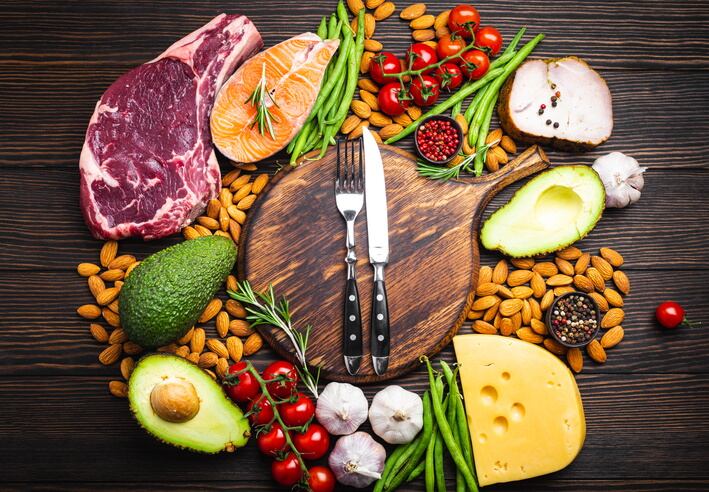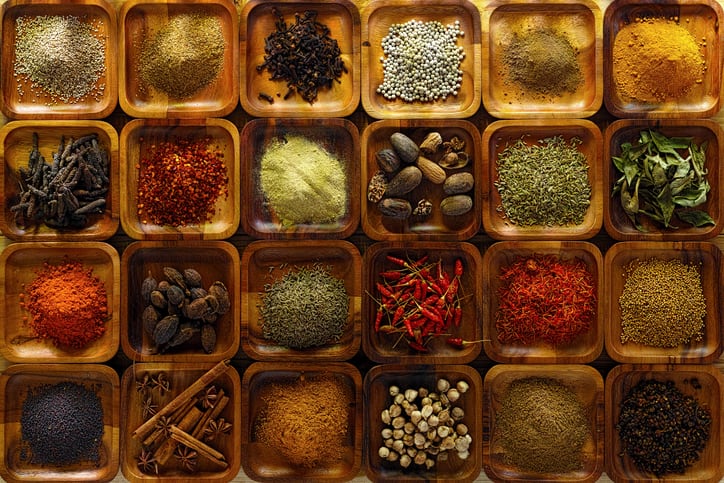We are living through a tumultuous time in human history. The shock to the system brought about by the COVID pandemic is the most obvious example of this. But other social, economic, political, demographic and ecological forces are inspiring rapidly changing – and often highly polarised – adjustments in our collective attitudes.
Trend predicting amidst such uncertainty can sometimes feel like whistling in the wind.
“I recall compiling my trends forecast last year and giving a wry smile at how any forecasts for 2020 had probably long-been proven wrong and that the idea of trying to predict 2021 seemed laughable,” recalled Paul Baker, founder of UK baker St Pierre Groupe.
Baker believes that, even as the world struggles to turn the page on coronavirus disruption, the impact and aftermath of the pandemic ‘will be felt for a long time to come’. “Ever the optimist though, these new habits create opportunity and that is particularly true for the food and drink industry,” he noted.
Industries like food and beverage that are so closely tied to the whims of the consumer need to ensure that their growth and innovation strategies align with the broader changes taking place. Those that succeed will ensure relevance, while those that fail risk falling by the wayside.
Healthy mind, healthy body

During 2020-21, the importance of diet and health was front of mind as coronavirus perpetuated a population-wide feeling of health uncertainty. Even if a degree of confidence is returning as the largely successful vaccination rollout across Europe provides some sense of security, the link consumers are making between diet and health is here to stay.
“The COVID-19 pandemic has affected consumers on a deeply emotional level, changing consumers priorities and perceptions about health and wellness,” observed Soumya Nair, Global Consumer Research and Insights Director at Kerry Taste and Nutrition.
Nair believes that emerging ingredients paint a picture of ‘the proactive consumer’, who is looking for ‘functionally forward food and beverages’ that aid in their overall health and wellness goals.
Gut health is a topic firmly on the radar, as our understanding of the positive impact a healthy gut has on everything from mood and sleep to immunity continues to rise. Kerry’s Global Taste Charts research for 2022 suggests that this area of innovation will gather additional steam in the year ahead. “Consumers are looking for better-for-you food and beverages that make them feel like they are taking an active role in their future health – but also taste great. This is evident through the emergence of botanical, citrus and fermented flavours throughout the charts.”
St Pierre Groupe’s Baker also sees the trend towards health and nutrition playing out in everyday categories like bakery. In particular, he suggested that changes to UK rules around fortification will see the addition of ingredients that deliver population health benefits become more common.
“Our food and nutrition labelling regulations are set by the EU. As such, next year will see changes to UK regulations. We have already seen some of this coming through with changes in flour fortification in bakery, but I would put money on more, similar, regulations coming into play from 2022 onwards.” He predicted ‘hot topics’ will include the addition of ingredients like folic acid to product formulations.
Fortification strategies could be employed to address other population-wide dietary deficiencies. For example around one-in-five adults and one-in-six children in the UK deficient in vitamin D. Other common nutrient deficiencies include: iron, iodine, vitamin B12, calcium, magnesium, vitamin A and fibre. Indeed, the UK’s Food and Drink Federation has launched an Action on Fibre campaign to encourage the industry to develop more fibre-rich products.
Ultra-processed pushback and cleaner labels
On the one hand, increased fortification could well be an upshot of awareness around diet and health. But on the other, many expect the movement against so-called ultra-processed foods to gain further momentum in 2022.
With unhealthy diets, which are often high in ultra-processed foods, responsible for 11m preventable deaths each year, some health experts are even calling for tobacco-style warning labels for ultra-processed food items.
Global health organisation Vital Strategies is one such proponent of warning labels. “It’s high time that consumers had the opportunity to see ultra-processed foods for what they are: foods that are not real foods, containing nutrients that are not real nutrition, pervasively marketed by transnational corporations offering choices that are not real choices,” argued Trish Cotter, Global Lead, Food Policy Program at Vital Strategies.
In this context, fresh and packaged foods that are nutritionally dense are likely to play a greater role in food industry innovation.
Data from NelsonIQ suggests that this is already playing out in our grocery baskets. Consumers are already making taking a closer look at the back-of-pack nutritional label, the research provider found. “Ingredient labels on products are more important than you think,” Nielsen market researchers stressed. “Forty-percent of consumers switched to a brand’s competitor in the last year because it had more robust and trustworthy information about their desired product, as well as 60% of consumers with food allergies and intolerances.”

For Jason Bull, Director of Eurostar Commodities, this demonstrates a need for the food industry to continue to drive towards cleaner labels. “Consumers are focusing increasingly on the ingredients that are within products and more importantly the functionality they have in products. We are … becoming more determined in our efforts to eat cleaner and to eat more sustainably and ridding products of E numbers while retaining functionality and quality is a constant goal and will be an ongoing trend for 2022.”
Regulatory changes – such as the European Commission’s move to ban white colouring titanium dioxide (E171) – look set to accelerate this trend over the coming 12 months.
Meat-free no flash in the pan – but is growth slowing?
The rise of plant-based options has been well documented. And according to shoppers and forecasters alike, we can expect more of the same in 2022. However, data suggests a mixed picture for the outlook of the category and points to a slow-down in the number of consumers ready to make the switch.
Research suggests 8.8m people across the UK say they plan to become vegetarian, vegan or pescatarian over the next 12 months - the highest figure recorded by shopping comparison site finder.com’s annual UK Diet Trends research in four years.
Yet finder.com’s research also demonstrates the gap between intention and action. For the prior year, 2020, 6.5m said they planned to cut animal proteins from their diet. But under 2% actually made the change, meaning the number of people who gave up meat in the UK in 2021 fell by 78% compared to 2020.
“Although the number of people who turned meat-free has dropped significantly last year, this year’s findings still show that adopting a veggie diet continues to remain popular across the country,” shopper trends specialist Reemul Balla contended. “Meat-free diets and being ‘flexitarian’ are getting more media exposure than ever so you would expect these positive trends to continue growing.”
Online search data examined by delivery box service HelloFresh noted an interesting trend in the protein space, with evidence of increased diversification for both plant and animal protein in 2022. “One key trend to look out for is the addition of new protein sources. While there may still be a rise in veggie options, choices such as pork and beef could become more common in dishes, replacing chicken as the go-to option.”

Sustainable consumption and eco labels
A concern that is increasingly coming to define how people eat – including a shift to plant-based and efforts to seek out locally sourced produce – is the sustainability of the food system.
According to forecasting from FMCG Gurus: “In recent years, concerns towards the environment have intensified, with many feeling that the state of the planet is at a tipping point. This is a trend that will continue in 2022 and play a significant role on purchasing habits.”
Consumers want to see food brands making progress on carbon emissions, food waste and plastic packaging, the research group suggested.
With 67% of consumers trying to have a positive impact through their everyday actions in 2021, Euromonitor International also believes sustainable consumption will be a key trend in 2022 and beyond. The researchers suggest that brands can capitalize by taking up carbon and eco labels that are ‘transparent’ and build trust.
Meanwhile, Kerry’s forecasters insist that sustainable consumption requires FMCG companies to adopt responsible sourcing strategies. Recent research by Kerry found that globally 49% of consumers are now considering sustainability when buying food and drink.
“Consumers are actively seeking out sustainable food and beverage products that have a significantly positive impact on the planet as well as on their personal health and wellbeing, looking for products with consumer-friendly ingredients, clean label claims and locally sourced ingredients,” Kerry’s Nair said.
“We see this demand through ingredients demonstrating greater provenance, such as botanicals and spices ethically sourced from their country of origin. We have also started to see some ingredients associated with plant-based foods having a dual role in taste. This is all contributing to the flavour trends we are seeing today, which are pointing towards authentic taste experiences.”
… But what about inflation?

Rising costs – from unhedged commodities, to rising energy prices and increasing logistics and labour expenses – are forcing up food prices. Barclays Capital suggested the outlook for 2022 cost inflation on an unhedged basis is in the mid-teens.
For all this optimism on 2022 trends, could rising inflation and the cost of living crisis serve to dampen consumer appetite to pay more for sustainable, healthy, or nutritionally dense foods? After all, time and again, cycles of rising food prices have seen consumers return to comfort foods, pantry staples and private label, trading down to cushion the blow on household finances.
To date, Barclays data shows volume elasticities have been ‘negligible’ but analysts warn the negative impact on volumes as prices are hiked will need to be closely monitored in the year to come.
Despite inflationary pressures, Eurostar Commodities director Bull insisted that the need to innovate will remain pressing in the year ahead. “Inflation, price increases and spiralling transport costs are grabbing all of the predictions in 2022. But if you look beneath the headlines there is a world of food sophistication taking place with a special focus on healthy eating and clean label. While the world around us is complex and dark, people want to go back to basics with their food, dropping over-processing in favour of simple, clean foods that people understand are much better for their health.”




